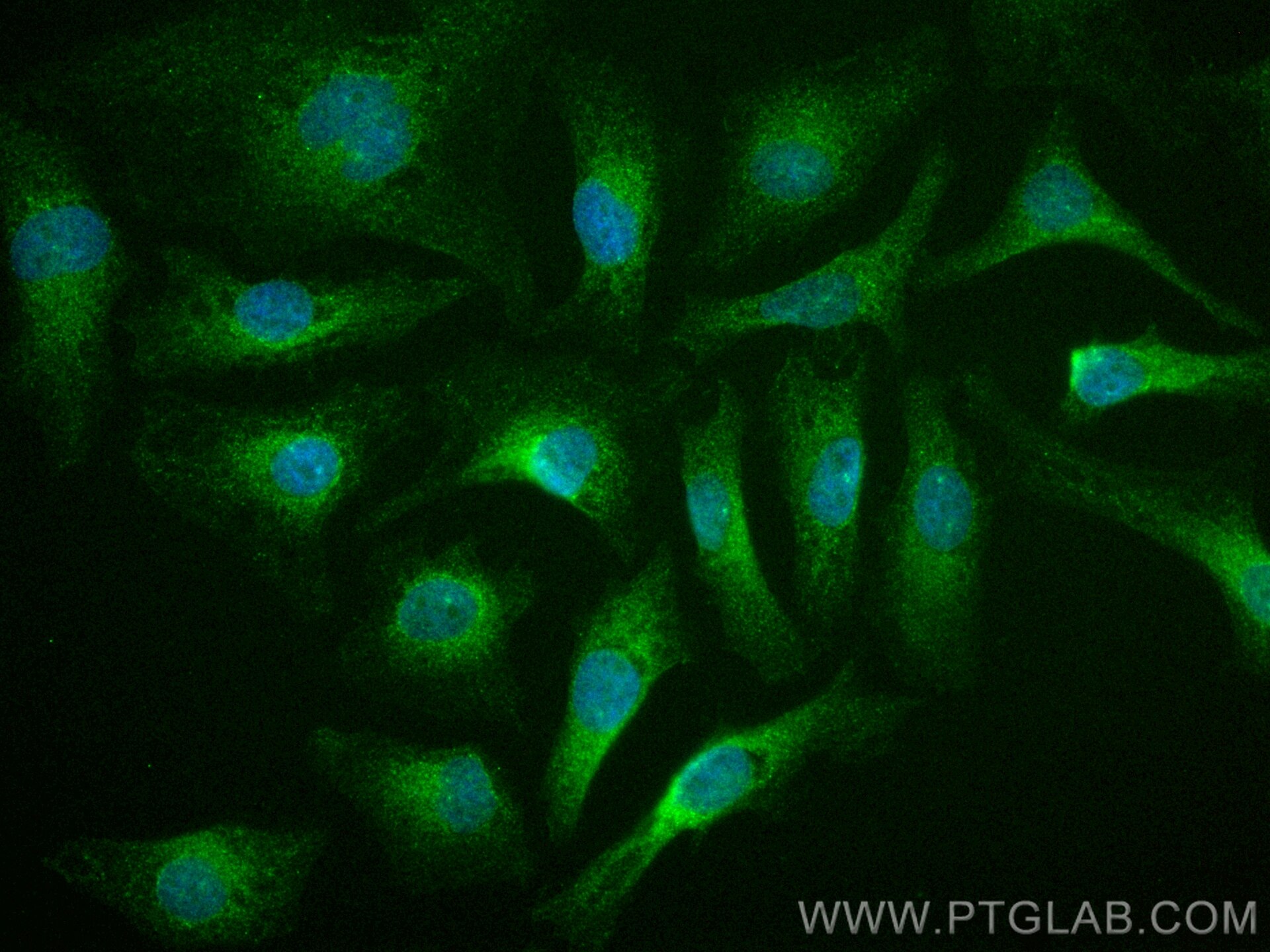Tested Applications
| Positive IF/ICC detected in | HeLa cells |
Recommended dilution
| Application | Dilution |
|---|---|
| Immunofluorescence (IF)/ICC | IF/ICC : 1:50-1:500 |
| It is recommended that this reagent should be titrated in each testing system to obtain optimal results. | |
| Sample-dependent, Check data in validation data gallery. | |
Product Information
CL488-11743 targets PKIA in IF/ICC applications and shows reactivity with human, mouse, rat samples.
| Tested Reactivity | human, mouse, rat |
| Host / Isotype | Rabbit / IgG |
| Class | Polyclonal |
| Type | Antibody |
| Immunogen | PKIA fusion protein Ag2338 Predict reactive species |
| Full Name | protein kinase (cAMP-dependent, catalytic) inhibitor alpha |
| Calculated Molecular Weight | 76 aa, 8 kDa |
| GenBank Accession Number | BC022265 |
| Gene Symbol | PKIA |
| Gene ID (NCBI) | 5569 |
| RRID | AB_3672511 |
| Conjugate | CoraLite® Plus 488 Fluorescent Dye |
| Excitation/Emission Maxima Wavelengths | 493 nm / 522 nm |
| Form | Liquid |
| Purification Method | Antigen Affinity Purified |
| UNIPROT ID | P61925 |
| Storage Buffer | PBS with 50% glycerol, 0.05% Proclin300, 0.5% BSA , pH 7.3 |
| Storage Conditions | Store at -20°C. Avoid exposure to light. Stable for one year after shipment. Aliquoting is unnecessary for -20oC storage. |
Background Information
cAMP-dependent protein kinase inhibitor alpha (PKIA) is also named as PRKACN1, and belongs to the PKI family. Among them, PKIA, a member of protein kinase A (PKA) inhibitor family, was found to be most significantly and highly expressed in susceptible animals (PMID:24910983). Decreased PKIA signaling would directly impact PKA activation, potentially inducing DRP1 phosphorylation and increasing ER Ca2+ stores (PMID:32152556). miR-129-5p activated PKA to regulate the phosphorylation of beta-catenin and cAMP-response element binding protein (CREB) by inhibiting PKIA (PMID:36222334).
Protocols
| Product Specific Protocols | |
|---|---|
| IF protocol for CL Plus 488 PKIA antibody CL488-11743 | Download protocol |
| Standard Protocols | |
|---|---|
| Click here to view our Standard Protocols |



